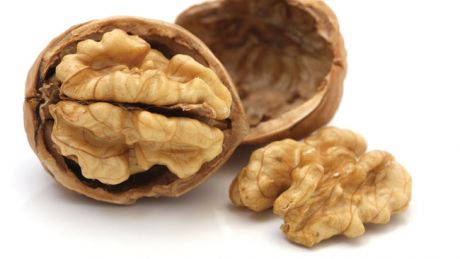
Linoleic acid is a liquid found mostly in polyunsaturated fats, such as cooking oils. It’s an omega 6 fatty acid which, along with omega 3, is one of two essential fats our body requires but can’t manufacture, so we have to get it through our diet. It plays a role in reproduction, brain activity, hair growth, bone density and energy production – but if you consume too much and the rest of your diet isn’t right, it can cause alarming health problems, including metabolic disease, heart disease, joint pain and skin conditions such as eczema. So how can you ensure you get only the good things from this crucial fat?
Inflaming tensions
Of the two essential fatty acids, omega 6s are inflammatory and omega 3s anti-inflammatory, so we need both to balance each other. When we consume too much linoleic acid without enough omega 3s, the omega 6s are converted into chemicals that promote inflammation in the body’s tissues. That’s when health problems can occur.
This problem is the result of conflicting advice we’ve been given about fats. For years dieticians have advised us to improve our cholesterol levels by avoiding saturated fats (found in food such as processed meats and butter) in favour of polyunsaturated fats such as vegetable oils.
Although it’s effective for cholesterol, eating so many polyunsaturated fats increases the amount of linoleic acid in our diet, elevating the risk of inflammatory conditions. The only way to balance this is to consume enough omega 3s.
Find your balance
Fortunately it’s not especially difficult to redress the balance. The best way to reduce your omega 6 intake is to switch from polyunsaturated cooking oils (such as sunflower and corn) to monounsaturated oils (olive, flaxseed and rapeseed).
Avoiding processed foods is another great way to avoid excess linoleic acid. Cook your meals from scratch using whole, healthy ingredients. Also add more omega 3s to your diet: snack on nuts and seeds, especially pumpkin seeds, and to eat more oily fish such as salmon.
Linoleic acid shouldn’t be vilified – it’s essential to our diet. But as with almost every food on the planet, we need to consume it in moderation.
Get the Coach Newsletter
Sign up for workout ideas, training advice, reviews of the latest gear and more.
Follow Brewer on Twitter @DrSarahB or visit drsarahbrewer.com. Her book The Essential Guide To Vitamins, Minerals And Herbal Supplements is available from Amazon
Keep a healthy diet with these 10 foods
Pass the acid test
Know the symptons
‘Signs that you’re eating too much linoleic acid and not enough omega 3s include feeling thirsty and irritable, having dry, itchy or cracked skin and dandruff, struggling to fight off illness and finding wounds slow to heal,’ says Brewer.
Take the test
An omega blood test kit will show you your levels of omega 6 and omega 3 (a ratio of around 3:1 is healthy) and recommend the dietary changes you need to make to achieve a better balance. The Ideal Omega Blood Test is £55 from nutricentre.com.
Make the right swap
Margarine and other spreads are often high in linoleic acid, so switch to an omega 3-rich alternative or use unsalted butter, which also helps boost your immune system. Peanuts also have a high linoleic acid content so replace them with omega 3-packed chia seeds or walnuts.
Sam Razvi wrote for Men’s Fitness UK (which predated and then shared a website with Coach) between 2011 and 2016.
